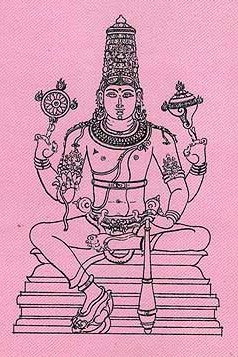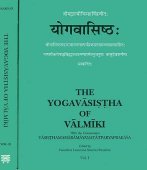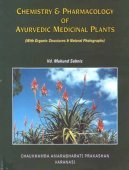Atreya, Ātreya: 20 definitions
Introduction:
Atreya means something in Buddhism, Pali, Hinduism, Sanskrit. If you want to know the exact meaning, history, etymology or English translation of this term then check out the descriptions on this page. Add your comment or reference to a book if you want to contribute to this summary article.
In Hinduism
Purana and Itihasa (epic history)
Source: archive.org: Puranic Encyclopedia1) Ātreya (आत्रेय).—A sage. This sage had acquired the power to go from one planet to another. Once this ṛṣi went to devaloka as the guest of Indra and there he drank Amṛta (the celestial elixir) and enjoyed the dances of the celestial maidens A desire to have a similar heaven of his own budded in his mind and he approached Viśvakarmā who gave him a new heaven of his own. But before long the demons took over this heaven from him. Though Viśvakarmā took back the same from the demons, Ātreya did not go back but returned to his old āśrama on the banks of Gomatī and doing penance there for a long time attained salvation (Brahma Purāṇa). More details. Ātreya was also present among the ascetics who assembled at the sarpasatra of Janamejaya. (Śloka 8, Chapter 55, Ādi Parva, Mahābhārata).
Ātreya was a disciple of Vāmadeva. (Śloka 6, Chapter 192, Vana Parva, Mahābhārata).
This ṛṣi taught his disciples about Nirguṇabrahma. (Śloka 7, Chapter 137, Anuśāsana Parva, Mahābhārata). (See full article at Story of Ātreya from the Puranic encyclopaedia by Vettam Mani)
2) Ātreya (आत्रेय).—A place of ancient Bhārata. (Śloka 68, Chapter 9, Bhīṣma Parva, Mahābhārata).
Source: Cologne Digital Sanskrit Dictionaries: The Purana Index1a) Ātreya (आत्रेय).—A pupil of Sūta;1 the last reference is to the sage in the Raivatamanvantara.2 Sage of the Tāmasa manvantara.3 Ātreya Śaradvata one of the seven sages;4 Ātreyavāruni,5 Niṣprakampa,6 Sūtapūḥ.7
- 1) Va. 61. 56.
- 2) Vāyu-purāṇa 62. 17, 54.
- 3) Vāyu-purāṇa 62. 41.
- 4) Vāyu-purāṇa 100. 11.
- 5) Vāyu-purāṇa 100. 82.
- 6) Vāyu-purāṇa 100. 107.
- 7) Vāyu-purāṇa 100. 96; 106. 39.
1b) A deva gaṇa of the Pitṛs, like Svastyātreya,*
- * Brahmāṇḍa-purāṇa III. 1. 51; 8. 81.
1c) The five sons of Atri and Anasūyā; Satynetra, Havya, Āpomūrṭi, Śanīśvara and Soma.*
- * Vāyu-purāṇa 28. 18-20; Brahmāṇḍa-purāṇa II. 11. 23-24.
1d) A tribe.*
- * Vāyu-purāṇa 45. 119.
Ātreya (आत्रेय) is a name mentioned in the Mahābhārata (cf. I.48.8, I.53, VI.10.67) and represents one of the many proper names used for people and places. Note: The Mahābhārata (mentioning Ātreya) is a Sanskrit epic poem consisting of 100,000 ślokas (metrical verses) and is over 2000 years old.

The Purana (पुराण, purāṇas) refers to Sanskrit literature preserving ancient India’s vast cultural history, including historical legends, religious ceremonies, various arts and sciences. The eighteen mahapuranas total over 400,000 shlokas (metrical couplets) and date to at least several centuries BCE.
Natyashastra (theatrics and dramaturgy)
Source: Wisdom Library: Nāṭya-śāstraĀtreya (आत्रेय) is the name of a sage who was in the company of Bharata when he recited the Nāṭyaveda them, according to the Nāṭyaśāstra chapter 35. Accordingly, they asked the following questions, “O the best Brahmin (lit. the bull of the twice-born), tell us about the character of the god who appears in the Preliminaries (pūrvaraṅga). Why is the sound [of musical instruments] applied there? What purpose does it serve when applied? What god is pleased with this, and what does he do on being pleased? Why does the Director being himself clean, perform ablution again on the stage? How, O sir, the drama has come (lit. dropped) down to the earth from heaven? Why have your descendants come to be known as Śūdras?”.

Natyashastra (नाट्यशास्त्र, nāṭyaśāstra) refers to both the ancient Indian tradition (shastra) of performing arts, (natya—theatrics, drama, dance, music), as well as the name of a Sanskrit work dealing with these subjects. It also teaches the rules for composing Dramatic plays (nataka), construction and performance of Theater, and Poetic works (kavya).
Pancaratra (worship of Nārāyaṇa)
Source: archive.org: Isvara Samhita Vol 1Ātreya (आत्रेय) shows that he was the son or descendant of Atri. The name is not then Ātreyadatta, like Yajñadatta, Naravāhavadatta and others.
Source: Shodhganga: Iconographical representations of Śiva (pancaratra)Ātreya (आत्रेय) or Ātreyasaṃhitā is the name of a Vaiṣṇava Āgama scripture, classified as a rājasa type of the Muniprokta group of Pāñcarātra Āgamas. The vaiṣṇavāgamas represent one of the three classes of āgamas (traditionally communicated wisdom).—Texts of the Pāñcara Āgamas are divided in to two sects. It is believed that Lord Vāsudeva revealed the first group of texts which are called Divya and the next group is called Muniprokta which are further divided in to three viz. a. Sāttvika. b. Rājasa (e.g., Ātreya-saṃhitā). c. Tāmasa.

Pancaratra (पाञ्चरात्र, pāñcarātra) represents a tradition of Hinduism where Narayana is revered and worshipped. Closeley related to Vaishnavism, the Pancaratra literature includes various Agamas and tantras incorporating many Vaishnava philosophies.
Ayurveda (science of life)
Source: archive.org: Vagbhata’s Ashtanga Hridaya Samhita (first 5 chapters)Ātreya (आत्रेय) is mentioned in verse 1.1 of the Aṣṭāṅgahṛdayasaṃhitā (Sūtrasthāna) by Vāgbhaṭa.—Ātreya has, in accordance with Mahāvyutpatti 3461, been Tibetanized as rGyun-śes-kyi-bu “son of the always knowing one”. While bu clearly represents the patronymic suffix eya, the correlation between rGyun-śes and Atri remains obscure, the latter being usually etymologized as the “devourer” (attri). There is a remote possibility that Atri has been associated with Agni, who is known in Vedic literature both as “omnivorous” (viśvād Ṛgveda VIII.44.26 etc.) and as “omniscient” (viśvavedas Ṛgveda I.128.8 etc.).

Āyurveda (आयुर्वेद, ayurveda) is a branch of Indian science dealing with medicine, herbalism, taxology, anatomy, surgery, alchemy and related topics. Traditional practice of Āyurveda in ancient India dates back to at least the first millenium BC. Literature is commonly written in Sanskrit using various poetic metres.
In Buddhism
Tibetan Buddhism (Vajrayana or tantric Buddhism)
Source: Wisdom Library: Tibetan Buddhism1) Ātreya (आत्रेय) is the name of a Bodhisattva mentioned as attending the teachings in the 6th century Mañjuśrīmūlakalpa: one of the largest Kriyā Tantras devoted to Mañjuśrī (the Bodhisattva of wisdom) representing an encyclopedia of knowledge primarily concerned with ritualistic elements in Buddhism. The teachings in this text originate from Mañjuśrī and were taught to and by Buddha Śākyamuni in the presence of a large audience (including Ātreya).
2) Ātreya (आत्रेय) also refers to one of the various Ṛṣis (sages) and Mahārṣis (great sages) mentioned as attending the teachings in the 6th century Mañjuśrīmūlakalpa.

Tibetan Buddhism includes schools such as Nyingma, Kadampa, Kagyu and Gelug. Their primary canon of literature is divided in two broad categories: The Kangyur, which consists of Buddha’s words, and the Tengyur, which includes commentaries from various sources. Esotericism and tantra techniques (vajrayāna) are collected indepently.
Languages of India and abroad
Sanskrit dictionary
Source: DDSA: The practical Sanskrit-English dictionaryĀtreya (आत्रेय).—a. (-yī f.) [अत्रेरपत्यं ढक् (atrerapatyaṃ ḍhak)] P.IV.1.122 Belonging to, descended or sprung from, Atri.
-yaḥ 1 A descendant of Atri.
2) The head of the descendants of Atri.
3) A priest closely related to the Sadasya.
4) An epithet of Śiva.
5) An essential humor or juice of the body, lymph.
-yī 1 A female descendant of Atri; गोत्रप्रशंसार्थ- मात्रेय्या अवधसंकीर्तनम् । न चापन्नसत्त्वा आत्रेयी । गोत्रं ह्येतत् (gotrapraśaṃsārtha- mātreyyā avadhasaṃkīrtanam | na cāpannasattvā ātreyī | gotraṃ hyetat) | ŚB. on MS.6.1.9.
2) The wife of Atri.
3) A woman in her courses (rajasvalā); Manusmṛti 11.87; Y.3.251.
4) Any woman of the Brāhmaṇical order.
5) Name of a river in the north of Bengal, also called Tista.
6) A pregnant woman; Mahābhārata (Bombay) 12.165.54; आत्रेयीमापन्नगर्भामाहुः । अत्र कुक्षौ अस्या विद्यत इत्यात्रेयी (ātreyīmāpannagarbhāmāhuḥ | atra kukṣau asyā vidyata ityātreyī) | ŚB. on MS.6.1.7.
Source: Cologne Digital Sanskrit Dictionaries: Edgerton Buddhist Hybrid Sanskrit DictionaryĀtreya (आत्रेय).—(1) name assumed by Kuśa (2) as physician: Mūla-Sarvāstivāda-Vinaya i.104.3; (2) name of a distinguished physician of Taxila: Mūla-Sarvāstivāda-Vinaya ii.26.7 ff.; note that this is the name of a great physician in Sanskrit
Source: Cologne Digital Sanskrit Dictionaries: Shabda-Sagara Sanskrit-English DictionaryĀtreya (आत्रेय).—m.
(-yaḥ) 1. The name of a Muni or saint, the son of Atri, applicable to Datta, Durvasas, and Soma. 2. An essential humor or juice of the body. f. (-yikā or -yī) A woman during her courses. f. (-yī) 1. The name of a river in the north of Bengal. 2. The wife of Atri. 3. Any woman of the Brahmanical order. E. atri a saint so called, ḍhak patronymic aff.
Source: Cologne Digital Sanskrit Dictionaries: Benfey Sanskrit-English DictionaryĀtreya (आत्रेय).—i. e. atri + eya. I. patronym., f. yī, A descendant of Atri, Mahābhārata 3, 971. Ii. f. yī, A woman who has bathed after temporary uncleanness, [Mānavadharmaśāstra] 11. 87.
Source: Cologne Digital Sanskrit Dictionaries: Cappeller Sanskrit-English DictionaryĀtreya (आत्रेय).—[masculine] ī [feminine] descendant of Atri; [feminine] also a woman in her courses.
Source: Cologne Digital Sanskrit Dictionaries: Aufrecht Catalogus Catalogorum1) Ātreya (आत्रेय) as mentioned in Aufrecht’s Catalogus Catalogorum:—philosopher. Mentioned in Brahmasūtra Oxf. 220^b, in Mīmāṃsāsūtra Iv, 3, 18. V, 2, 18. Vi, 1, 26.
2) Ātreya (आत्रेय):—grammarian. Several times quoted in Mādhavīyadhātuvṛtti.
3) Ātreya (आत्रेय):—mentioned together with Śākalya as padakāra of the Ṛv., by Devarāja in Nighaṇṭubhāṣya p. 26.
4) Ātreya (आत्रेय):—lawyer. Quoted by Hemādri in Dānakhaṇḍa 451. 622.
5) Ātreya (आत्रेय):—Uṣṭrapayaḥkalpa med. B. 4, 220. Nāḍījñāna. L. 202. Hārītasaṃhitā med. [Oudh 1876-1877], 34. X, 24. Comp. Ātreyahārītottara Rādh. 31, and Ātreyasaṃhitā. He is mentioned as a medical authority in Vāsu- devānubhava and Ṭoḍarānanda W. p. 289, by Tīsaṭa W. p. 293. Bṛhadātreya, Kaniṣṭhātreya, Madhyamātreya, Vṛddhātreya, Kṛṣṇātreya W. p. 289.
6) Ātreya (आत्रेय):—Quoted in Taittirīyaprātiśākhya 5, 31. 17, 8.
7) Ātreya (आत्रेय):—Cikitsāśāstrasaṃgraha.
Source: Cologne Digital Sanskrit Dictionaries: Monier-Williams Sanskrit-English Dictionary1) Ātreya (आत्रेय):—[from ātra] m. ([Pāṇini 4-1, 122] [commentator or commentary]) a descendant of Atri, [Śatapatha-brāhmaṇa xiv, etc.]
2) [v.s. ...] Name of a physician, [Bhāvaprakāśa]
3) [v.s. ...] a priest who is closely related to the Sadasya (perhaps because this office was generally held by a descendant of Atri), [Śatapatha-brāhmaṇa iv; Aitareya-brāhmaṇa]
4) [v.s. ...] Name of Śiva, [cf. Lexicographers, esp. such as amarasiṃha, halāyudha, hemacandra, etc.]
5) [v.s. ...] chyle, [cf. Lexicographers, esp. such as amarasiṃha, halāyudha, hemacandra, etc.]
6) [from ātra] n. Name of two Sāmans, [Āśvalāyana-gṛhya-sūtra] etc.
7) [v.s. ...] m. [plural] Name of a tribe, [Mahābhārata vi, 376]
8) [v.s. ...] m. (for atrayas m. [plural] of atri q.v.) the descendants of Atri, [Mahābhārata iii, 971.]
Source: Cologne Digital Sanskrit Dictionaries: Yates Sanskrit-English DictionaryĀtreya (आत्रेय):—(yaḥ) 1. m. Atri’s son; juice of the human body. (yikā) a menstruous woman. (yī) Atri’s wife; a river.
Source: DDSA: Paia-sadda-mahannavo; a comprehensive Prakrit Hindi dictionary (S)Ātreya (आत्रेय) in the Sanskrit language is related to the Prakrit word: Atteya.
[Sanskrit to German]
Sanskrit, also spelled संस्कृतम् (saṃskṛtam), is an ancient language of India commonly seen as the grandmother of the Indo-European language family (even English!). Closely allied with Prakrit and Pali, Sanskrit is more exhaustive in both grammar and terms and has the most extensive collection of literature in the world, greatly surpassing its sister-languages Greek and Latin.
Kannada-English dictionary
Source: Alar: Kannada-English corpusĀtrēya (ಆತ್ರೇಯ):—
1) [noun] a descendant in the lineage of the sage ಅತ್ರಿ [atri].
2) [noun] the sage Durvāsa, son of the sage ಅತ್ರಿ [atri].
3) [noun] the Moon-God.
--- OR ---
Ātrēya (ಆತ್ರೇಯ):—[adjective] of, relating to or being descendant of, the sage ಅತ್ರಿ [atri].
Kannada is a Dravidian language (as opposed to the Indo-European language family) mainly spoken in the southwestern region of India.
See also (Relevant definitions)
Starts with: Atreya bhatta, Atreya Shiksha, Atreyabimba, Atreyadudyuti, Atreyagovinda, Atreyasamhita, Atreyasamhitasara, Atreyashiksha, Atreyasmriti, Atreyatantra, Atreyatirtha, Atreyayana, Atreyayani.
Ends with (+2): Anantatreya, Bhratreya, Brihadatreya, Candratreya, Datreya, Dattatreya, Gauratreya, Kanishthatreya, Krishnatreya, Madhyamatreya, Samantatreya, Samtadattatreya, Saphalatreya, Shvetatreya, Stambhanadattatreya, Svastyatreya, Tridhatreya, Triratnatreya, Trisharanatreya, Triyanatreya.
Full-text (+173): Madhyamatreya, Brihadatreya, Atreyiya, Atreyayana, Mriktavahas, Vamarathya, Kanishthatreya, Vriddhatreya, Urucakri, Shyavashva, Atreya Shiksha, Sadaprina, Pratiprabha, Atreyi, Dattatreya, Attiraiyam, Gopana, Caitrayana, Ardhapaṇya, Gaurajina.
Relevant text
Search found 63 books and stories containing Atreya, Ātreya, Ātrēya; (plurals include: Atreyas, Ātreyas, Ātrēyas). You can also click to the full overview containing English textual excerpts. Below are direct links for the most relevant articles:
Charaka Samhita and Sushruta Samhita (by Nayana Sharma)
The Identity of Ātreya < [Chapter 1]
The Date of Caraka Saṃhitā < [Chapter 1]
The Teacher of Āyurveda < [Chapter 3]
Brahma Sutras (Shankara Bhashya) (by Swami Vireshwarananda)
Chapter III, Section IV, Adhikarana XIII < [Section IV]
Rig Veda (translation and commentary) (by H. H. Wilson)
History of Indian Medicine (and Ayurveda) (by Shree Gulabkunverba Ayurvedic Society)
Chapter 4 - The Story of Atreya < [Part 1 - The History of Medicine in India]
Chapter 8 - Caraka Samhita—A Redacted Treatise < [Part 1 - The History of Medicine in India]
Chapter 3 - The Story of Bharadvaja < [Part 1 - The History of Medicine in India]
The Shiva Purana (by J. L. Shastri)
Chapter 17 - The Narrative of Creation < [Section 7.1 - Vāyavīya-saṃhitā (1)]
Chapter 34 - The enumeration of Manvantaras < [Section 5 - Umā-Saṃhitā]
Chapter 35 - Śiva-sahasranāma: the thousand names of Śiva < [Section 4 - Koṭirudra-Saṃhitā]
The Brahmanda Purana (by G.V. Tagare)
Chapter 11 - The creation of Sages (saptarṣi) < [Section 2 - Anuṣaṅga-pāda]
Chapter 8 - The race of the sages: Atri and Vasiṣṭha < [Section 3 - Upodghāta-pāda]
Chapter 38 - The narrative of Bhārgava Paraśurāma (b) < [Section 3 - Upodghāta-pāda]
Related products


